Today's Best Fishing Times
Get the best fishing times for Moose Lake with Lake-Link's Fishing Forecast. SEE MORE
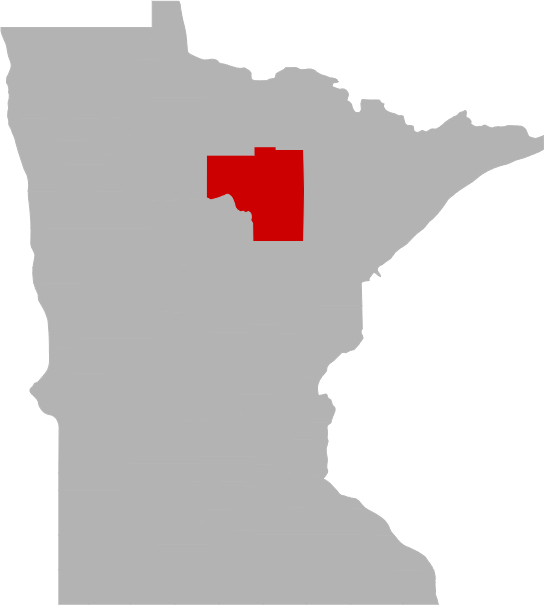
Share your catch!
We want to see what you've caught on Moose Lake.Frequently Asked Questions About Moose Lake, MN
- How big is Moose Lake?
- How deep is Moose Lake?
- What kind of fish can you catch in Moose Lake?
- What are the closest cities to Moose Lake?
- Are there places to stay in the Moose Lake area?
- Are there boat launches on Moose Lake?
- Are there places to eat and drink near Moose Lake?
- What is the average air temp for Moose Lake?
How big is Moose Lake?
How deep is Moose Lake?
What kind of fish can you catch in Moose Lake?
Other fish species in the lake include Blacknose Shiner, Bluntnose Minnow, Central Mudminnow, Common Shiner, Golden Shiner, Johnny Darter, Mimic Shiner and White Sucker.
What are the closest cities to Moose Lake?
Are there places to stay in the Moose Lake area?
More Lodging Options
Are there boat launches on Moose Lake?
Are there places to eat and drink near Moose Lake?
Explore the Moose Lake area in a RV
Are you looking for an adventurous vacation option that won't break the bank? Look no further than renting an RV! Contrary to popular belief, the process is much simpler than you might imagine. With just a few easy steps, you'll soon be experiencing the ultimate freedom and convenience of exploring the open road in your very own recreational vehicle. And the best part? RV travel can save you up to 60% compared to other types of vacations! With the money you'll save, you'll be able to travel even more and create unforgettable memories along the way. So why wait? Start planning your next adventure today with an RV rental. Learn more about renting a RV.
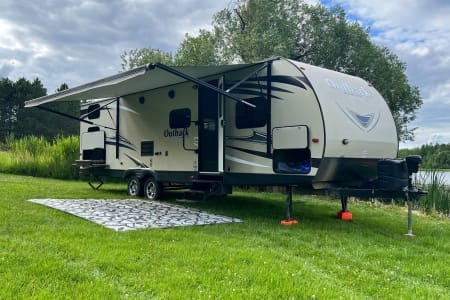
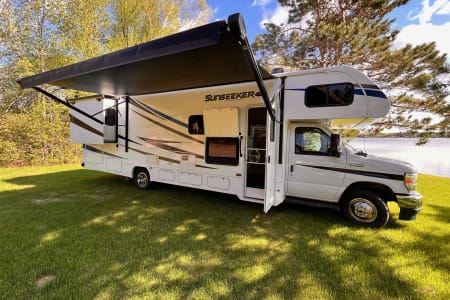
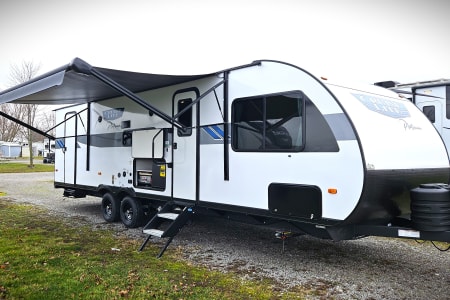
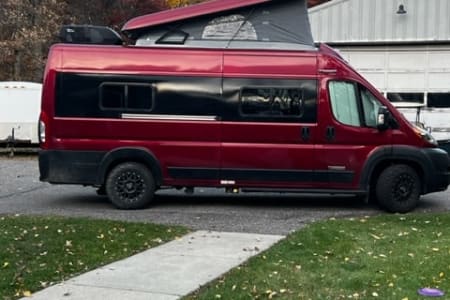
History & Status of the Fishery
Moose Lake is a moderately sized, mesotrophic, class 25 lake in northern Itasca County near the town of Northome. The lake is moderately fertile and has good water clarity. Most of the shoreline is in a natural state consisting primarily of forest and secondarily of bog. Moose Lake is situated in the Big Fork River/ Moose Brook minor watershed and has four inlets of wetland origin. There is a connection to Big Calf Lake via the outlet, Moose Brook.
A diverse aquatic plant community is a major attribute of Moose Lake, providing valuable habitat for a variety of fish species. Submergent plants were widespread, growing to a depth of 13 feet. Sago pondweed, coontail, and flatstem pondweed were the most widespread submergent plants. Floating leaf and emergent vegetation were also widespread. Yellow and white waterlilies were the most common floating leaf species. The emergent plant community was diverse. Hardstem bulrush and arrowhead (Sagittaria spp) were the most widespread emergent species and occurred around much of the lake. Thirteen terrestrial species were found on the shoreline with sedges being the most widespread.
Moose Lake supports a relatively diverse fish community, providing angling opportunities for several species. Yellow perch were the most common fish captured in gill nets. The yellow perch catch was high when compared to similar lakes. Yellow perch have historically been abundant in Moose Lake. The size structure was generally poor, however, as only 11% of individuals exceeded 8 inches in length. Given the size structure and relative abundance, yellow perch appear to be a very important prey species in Moose Lake.
Walleye were sampled in relatively high numbers in 2008. The catch rate of 9.4/gill net was the second highest recorded for Moose Lake and was high compared to similar lakes. Prior to 1996, Moose Lake produced walleye catches that were average for the type of lake. Since 1996, catch rates have been relatively high. In 2008, size structure was favorable for anglers as 44% exceeded 15 inches. The largest fish sampled exceeded 24 inches. Growth was near the statewide average and individuals exceeded 15 inches by age 5. Few individuals (15%) exceeded age 5, suggesting high mortality of older, larger individuals. Skewed age distributions are often the result of relatively high angler harvest of larger, older fish. Given the abundance and size distribution, quality angling opportunities exist for this species.
Northern pike were sampled in relatively high numbers as well. Prior to 1981, Moose Lake produced pike with relatively low catches when compared to similar lakes. Since 1981, the catches have been relatively high suggesting a trend of increased abundance. In 2008, size structure was poor as few individuals reached quality size. When pike occur at high densities, size is often poor, limiting angler interest. Age analysis identified eight year-classes. Growth was near the statewide average with individuals typically exceeding 21 inches by age 5. Few individuals exceeded age-5, contributing to the poor size distribution. Given the poor size and age structures, the popularity of the northern pike fishery may be limited. Anglers are encouraged to release pike over 22 inches to improve the size and age distributions.
Black crappie catches from Moose Lake have been relatively low in most assessments. The current assessment resulted in a catch rate of 0.2/trap net and 0.6/gill net, indicating relatively low abundance compared to similar lakes. Most individuals were large as length ranged from 8 to 12 inches. Age analysis identified five year-classes and growth was near the statewide average with individuals exceeding 8 inches by age 4.
Test net sampling often inadequately samples largemouth bass. Largemouth bass were sampled using night boat electrofishing in June. Largemouth bass were captured in low numbers (2.3/hour on-time). Natural reproduction appears to be good, however, as special electrofishing resulted in a 41.5 YOY largemouth bass per hour. More data is needed to thoroughly evaluate the bass population of Moose Lake.
Natural shoreline characteristics and good water quality are major attributes of Moose Lake. The protection of water quality and habitat is critical in maintaining or improving fish and wildlife populations. Unfortunately, human activities often negatively impact lakes. Fertilized turf-grass lawns and failing septic systems along with the removal of shoreline and aquatic vegetation, mowing to the shore, and installing sand blanket beaches results in destabilized shorelines, uncontrolled erosion, and increased run-off, contributing excess nutrients and sediment to the lake and degrading water quality and habitat. By understanding the cumulative impacts of our actions and taking steps to avoid or minimize them, we can help insure our quality water resources can be enjoyed well into the future. A complete description of shoreline best management practices can be found in "Lakescaping for Wildlife and Water Quality" at the Grand Rapids Area Fisheries Office or online at www.mndnr.gov.
What is the average air temp for Moose Lake?
More Nearby Lakes To Explore
There's more lake's to explore around Moose Lake...| DISTANCE | ACRES | MAX DEPTH | |
| Island Lake | 3.5 mi | 3,108 | 35 ft |
| Teufer Lake | 3.7 mi | 39 | 52 ft |
| Glove Lake | 4.1 mi | 18 | 12 ft |
| Wagner Lake | 5.2 mi | 73 | 60 ft |
| Bartlett Lake | 5.8 mi | 304 | 16 ft |
| Cameron Lake | 5.8 mi | 94 | 26 ft |
| Pine Lake | 6.4 mi | 72 | 44 ft |
| Shallow Pond | 7.2 mi | 225 | 14 ft |
| Dora Lake | 8.3 mi | 423 | 18 ft |
| Hamrey Lake | 8.6 mi | 67 | 60 ft |






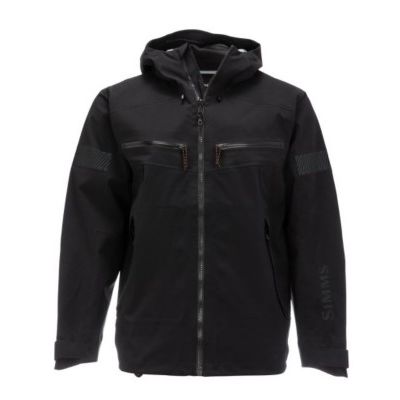
))/2966927.json)










